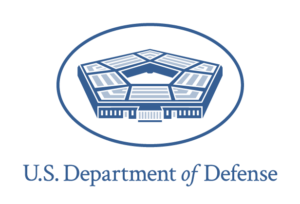Written by: Abby Keeler, BS and Kayla Reed-Fitzke, PhD, LMFT
Last month, in Part I of a blog series exploring the 2024 Society for Human Resource Management (SHRM) Report, we emphasized the critical importance of understanding why military spouses represent a valuable and skilled talent pool for professional recruitment. We highlighted one of the SHRM Report’s primary points – military spouses have many capable qualities and unique experiences that allow them to fill talent gaps in the workforce and that they are inherent problem-solvers, proven to be dependable, adaptable, and flexible (SHRM, 2024). Furthermore, it is critical that organizations have a formal program for hiring military spouses; otherwise, this diverse talent pool gets left untapped. In the second part of this blog series, we aim to focus on how organizations can help in the employment of military spouses based on the findings within the SHRM Report.
Recruitment and Hiring Practices to Support Military Spouses
As noted by the authors of the SHRM Report (2024), 84% of organizations do not have an established program(s) for recruiting and hiring military spouses. Additionally, although some organizations do have a general recruitment program, three in four of those organizations do not tailor those recruitment and hiring strategies specifically for military spouses. For organizations that do leverage tailored strategies, the most effective include (1) implementing a remote onboarding process, (2) allowing flexible scheduling or remote work, and (3) modifying existing positions to be more flexible for military spouses (SHRM, 2024). These strategies have proven to aid in recruitment for military spouses, but there are many other strategies (pictured below) that have been leveraged and found useful.
![Attribution: Society for Human Resource Management/SHRM. (2024). Retention Practices to Support Success [Table]. SHRM Report](https://oneop.org/wp-content/uploads/2024/12/SHRM-Report-Part-II-1.jpg)
[ Table Attribution: Society for Human Resource Management/SHRM. (2024). Retrieved from SHRM Report ]
When discussing strategies to promote the recruitment and hiring of military spouses, it is important to discuss the implicit challenges of recruiting and hiring that the strategies are working to circumvent. The authors of the SRHM Report (2024), described three primary challenges commonly identified by HR professionals that get in the way of developing concrete plans to tailor recruiting and hiring practices. They also offer possible solutions to meet the identified challenges.
Challenge 1: Self-Identification
Like many others in the job market, military spouses may wonder about what to include on their resumes, particularly regarding if they should somehow note their military affiliation. One challenge HR professionals face when recruiting military spouses is that often, military spouses don’t self-identify in the hiring process. This means organizations may not know if they are indeed hiring from the military spouse talent pool. Forty-five percent of HR professionals included in the Report indicated self-identification as a primary challenge in hiring military spouses (SHRM, 2024).
The SRHM Report offers one possible solution of sending a specific signal that indicates your organization is committed to hiring military spouses (SHRM, 2024). This can be as simple as having a public facing pledge that your organization is committed to recruiting and hiring military spouses. Organizations could also consider adding a voluntary self-identification system on job applications that allows and encourages military spouses to self-identify. This can help applicants see that the organization is working to ensure fair consideration for their circumstances. Actively engaging in targeted outreach to military spouses and participating in job fairs or other recruitment events is an effective way to connect directly with this group and demonstrate organizational support for their employment. An organization could also do this by partnering with established programs like the Military Spouse Employment Partnership (MSEP) and Hiring Our Heroes.
Challenge 2: Lack of Awareness
If an organization is new to tailoring recruitment strategies to military spouses, they may be unsure of where to begin. A general lack of awareness of available programs, job posting locations, or how to target military spouses’ unique needs is another primary challenge identified in the SHRM Report (2024). A possible avenue in overcoming this challenge lies in proactively gaining knowledge (SHRM, 2024). Helpful resources highlighted by HR professionals in the report support building this knowledge base and improving recruitment efforts are centered in connections to local community-based organizations that support military spouses and specialized job boards. Forming such connections can be challenging and requires intentional outreach. These actions can include:
- Contacting local military support offices.
- Connecting to military family support centers.
- Reaching out to military family readiness centers, particularly embedded employment assistance, letting them know you are actively seeking military spouses.
- Brainstorming with your organization to discuss other ways to develop customized strategies.
Challenge 3: Flexible or Remote Work
HR professionals in certain industries (e.g., physical, service) are more likely to indicate a lack of flexibility in their positions as a challenge to recruiting and hiring military spouses. Although not all organizations or positions can be remote-based or have flexible schedules, it is important to examine how much flexibility can be offered for each position (SHRM, 2024). Due to the unique needs of military spouses, including frequent relocations and temporary changes in childcare resulting from the military environment, remote work and/or flexible schedules allows for more stability and can offer solidity through challenging transition periods.
Up Next: Part III
Now that we have reviewed suggestions on how to recruit and hire military spouses, we’ll next focus on how to retain employed military spouses. In Part III of this blog series, we will discuss the SHRM Report’s guide to success in retaining employees for longer durations, ultimately fostering a steady work environment, and helping the lives of families serving our country.
References
Society for Human Resource Management/SHRM. (2024). Insight to action: Leveraging the potential of military spouse talent. https://shrm-res.cloudinary.com/image/upload/v1719327509/Foundation/CPR-240843_Research_Insight_to_Action_Leveraging_the_Potential_of_Military_Spouse_Talent_R5-DIGITAL.pdf
Cover Image by: nndanko/Adobe Stock 430791443













